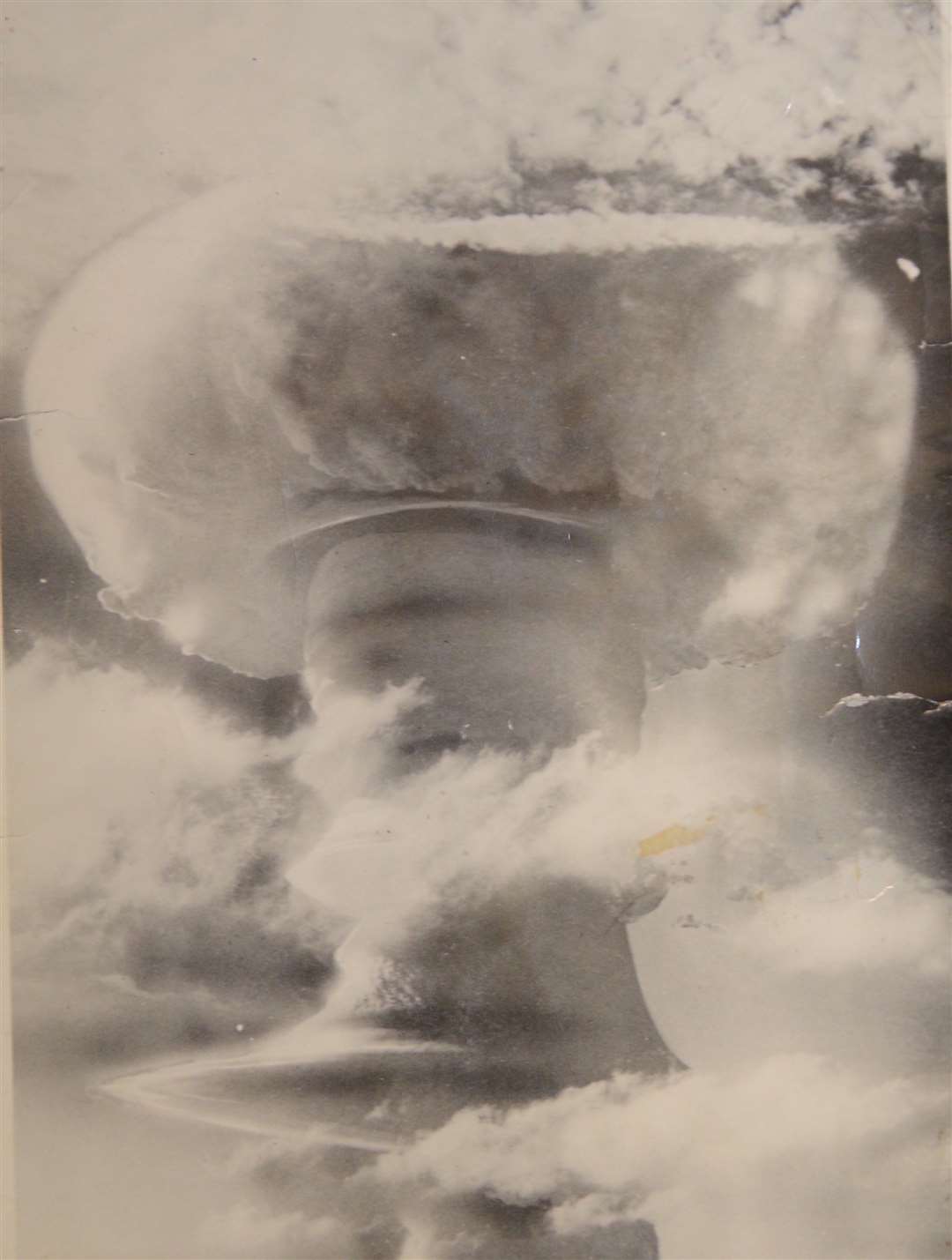The families of Kent veterans of Britain's nuclear testing programme needed for mental health study
Published: 18:42, 18 May 2021
Updated: 18:45, 18 May 2021
The children, wives and widows of nuclear test veterans in Kent are being urged to sign up for a ground-breaking study.
During the 1950s and 1960s, around 22,000 British Servicemen - many of them called up for National Service - witnessed nuclear tests on mainland Australia, the Montebello Islands off Western Australia and Christmas Island in the South Pacific.

They were very often provided with no protection at all beyond advice to 'turn your back to the blast.'
Many went on to suffer health problems, including rare cancers, infertility, musculo-skeletal issues and digestive problems.
Unfortunately, ill health and a higher rate of birth defects believed due to the radiation were often also passed on to the veterans’ descendants.
Now, for the first time, the psychological health and wellbeing of those closest to the veterans is being placed in the spotlight.
The British Nuclear Test Veterans' Association (BNTVA) is taking part in a UK-wide research study led by Dr Nicola Fear, epidemiologist at the King’s Centre for Military Research, London, and by Dr Cherie Armour, Trauma and Mental Health Researcher, of Queen’s University, Belfast.
The study will aim to understand the psychosocial determinants of psychological health and wellbeing for veteran families and the wider experiences of being part of a military.
The memory of witnessing a nuclear bomb explode at close quarters is something that still haunts many of the 2,500 to 3,000 veterans who are still alive today.
Some have felt unable to speak to their families about their experiences of the tests, for fear of breaking the Official Secrets Act.
This can cause frustration within the family, impacting on physical and mental health and contributing to relationship break-ups.
Terry Quinlan from Leybourne near West Malling is one Kent veteran who was involved in Britain's nuclear bomb testing programme in the 1950s.
He was posted to Christmas Island with the Royal Army Service Corps where he witnesses the detonation of the test bomb Grapple X off the southern tip of the atoll, just 23 miles from Mr Quinlan's base.
The blast was equivalent to 1.8 megatons of TNT - or 120 times more powerful than the Little Boy bomb dropped on Hiroshima during the Second World War.
Mr Quinlan and his comrades had been issued with no protective clothing. Indeed in the blistering tropical heat, most were wearing nothing but shorts.
As a precaution, they had been told to sit on the beach with their backs to the blast with their eyes closed and their fists covering their eyes.
Mr Quinlan described a tremendous flash of light like an X-ray and a scorching heat on his back.
He said: “I could see the bones in my hands."
Shortly after came the blast wave which knocked them forward in the sand, felled coconut trees in a nearby plantation and brought down their tents.
After a few brief minutes of horror, the servicemen were allowed to stand and watch as the mushroom cloud rose in the sky.
Mr Quinlan went on to endure four more nuclear blasts.
At the end of his service, he thought himself lucky to have survived unharmed. But just a few years later, at just 24, he suffered the first of two cancerous tumours and subsequently has required five heart operations.
Mr Quinlan said: "Of course it caused distress to our families - especially those whose children were subsequently born with missing limbs.
"So many of my mates died young, between the age of 40 and 60. Of the 210 men in my unit, only two of us are still alive."
One man, aged 31, who asked not to be named is the grandson of a serviceman who took part in Operation Antler at Maralinga in 1957. He believes that multiple diagnoses of bipolar disorder passing through generations in his family are attributable to his grandfather’s military service.
Meanwhile, a daughter, born with the loss of a limb, said how her mother had often talked of her father’s personality change after his return from Operation Grapple.
He never sought professional help, and ended up walking away from his family.
Sailors and airmen were also affected. The destroyer HMS Diana was ordered to sail through the fall-out after the test of a 98kt bomb on June 19, 1956, during Operation Mosaic off the Mont Bello Islands in Western Australia.
Ceri McDade, the chair of the BNTVA, said: “A study as expansive as the one now proposed will be of immense value to the association.
“Study findings may well reveal the unique attributes that we believe lie within the British nuclear community compared to the wider UK military population, and lead to the production of tailored physical and mental health services.
“I encourage you to participate in this much-needed study.”
The study begins at the end of May and will run until the end of 2022.
If anyone would like to take part, contact the BNTVA on 0208 144 3080 or email chair@bntva.com
Read more: All the latest news from Kent
Read more: All the latest news from Maidstone
Read more: All the latest news from Malling
More by this author
Alan Smith